Have you ever opened your closet to a rainbow array of colors and thought, well, it’s going to be black pants today, I guess? We have all fallen victim to closet color overload, where our clothing feels incapable of being mixed and matched, and just doesn’t even seem to look good on us. Well, here’s where seasonal color analysis can help you out.
Seasonal color analysis is a system that takes our skin tone, natural eye tone, and hair color and formulates the best color palette for us based on those factors. It takes into account our undertones (hue) and the value (light versus dark) of our skin, hair, and eyes and uses that to find the types of colors we look best in.
We may earn a commission from you clicking a link below. And as an amazon associate, we earn on qualifying purchases. Full affiliate policy, here.
How do you determine your season?
Seasonal color analysis is broken up into three main factors:
Hue: Your hue can either be cool or warm (there are also neutral leaning seasons but they will still often lean one way slightly)
Value: Your value is either light or dark
Chroma: Muted/soft to bright/clear
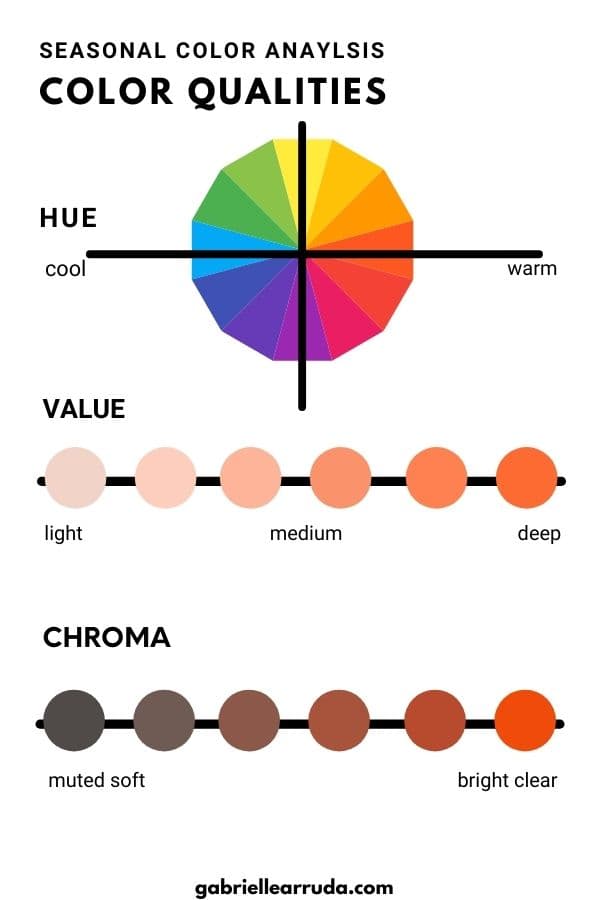
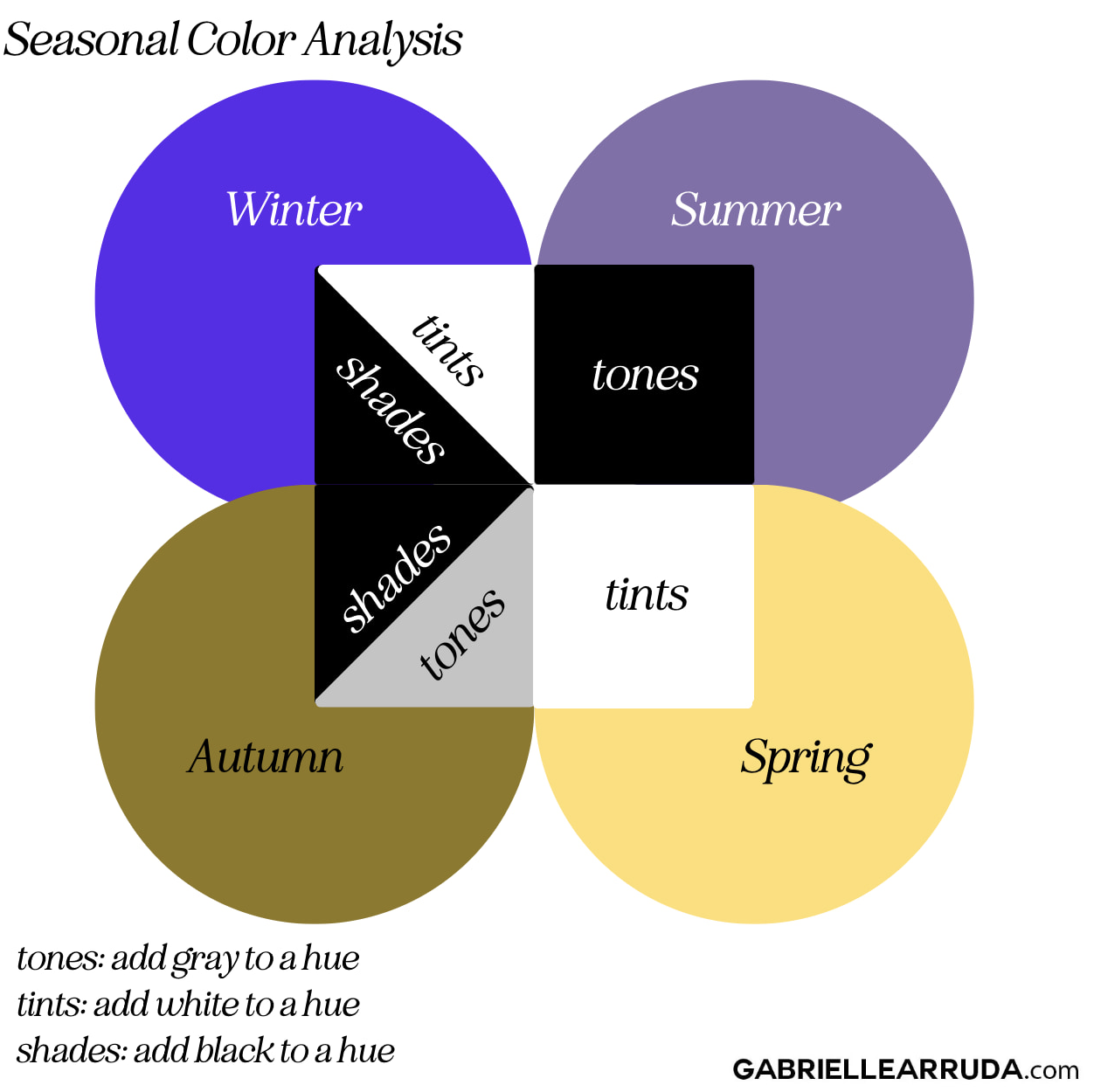
And are evaluated from your:
- Eye color
- Hair color
- Skintone
- And most importantly how your skin’s undertone reacts to certain colors
Your skin tone, hair color, and eye color will fall into one of four main seasonal categories: winter, spring, summer, and autumn.
The base families are named after seasons because each season has an established color association with it. For instance, we think of oranges and red for autumn, icy white and pale blue for winter, lush green for spring, and light, airy colors for summer.
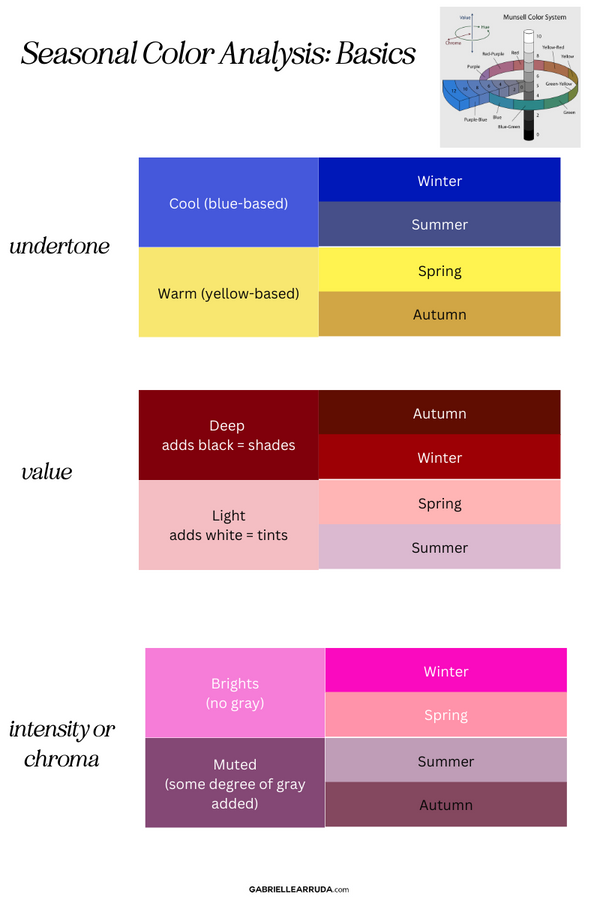
This is not a new concept and goes back to impressionist painters who had to accurately represent a seasonal landscape by the tones, hues, and shades they used. But the concept of seasonal color in regards to your own hair, skin, and eyes was popularized by Carole Jackson’s book “Color Me Beautiful” in the 1980s.
Does anyone else have flashbacks of their mom trying to properly categorize them when they were a teen? No, just me. Well, I plan to give you some easier-to-digest resources on how to determine your seasonal color.
Why does my seasonal color palette matter?
Discovering your seasonal color can help you hone what colors look best on you and help you discover what new shades you should integrate into your wardrobe. It also provides clarity on why a certain shade might not work for you.
Seasonal color analysis is a great place to start with your own unique color palette. Certainly, you can expand it and develop a color palette that is uniquely you. However, this information will help guide you on how to choose colors outside your palette as well, by knowing your hues and picking colors with the correct undertones.
This should not be a limiting experience, but rather setting up a strong foundation to build upon.
As you can see in the below image, we have the same girl with a color that brings out her best features, a color that is neutral (doesn’t highlight but doesn’t take away from either), and a color that is wrong for her. (if you don’t see it, try imagining her in a full dress in that color).
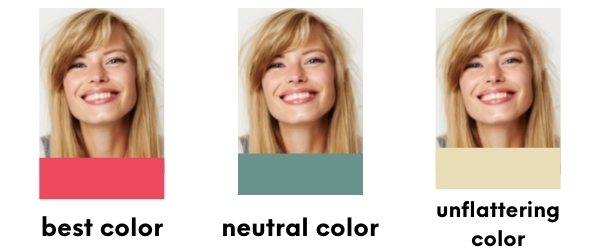
The more you train your eye to see the depth of color, and the hue of the color, the more you will be able to accurately picks colors for your season. However, we will be getting into foundational color palettes for all 12 seasonal color analyses shortly.
So while your hue will relate to whether you have warm or cool undertones. Your value (light or dark) will include your overall coloring, but will more specifically focus on your hair color.
Hue: Warm versus Cool
To give you a better understanding of the two hue options here are some examples.
Warm-Hued Faces
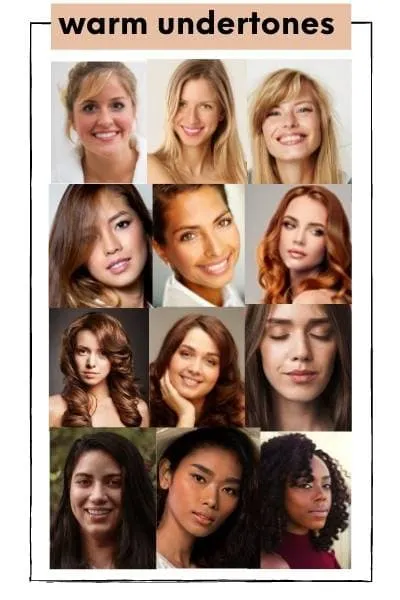
Warm hued faces will have less contrast between their skin, eyes, and hair color. They often have golden or rich undertones.
Cool-Hued Faces
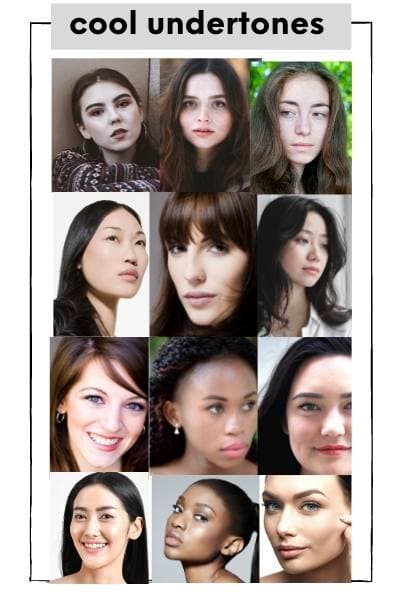
Cool faces will have moderate to high contrast in their features. They often have darker hair and more pale skin. But all races can have cool undertones, and it breaks down to having a contrast between your skin tone and your hair.
Now, that is just the first two base categories, there are actually 4 main hue options.
- Cool
- Neutral
- Warm
- Olive – Note olive skin tone is a hotly debated topic in the color analysis world. While it if often marked as a “cool” undertone, color draping is the most reliable way to find your season and can mean you are a warm/neutral toned olive.
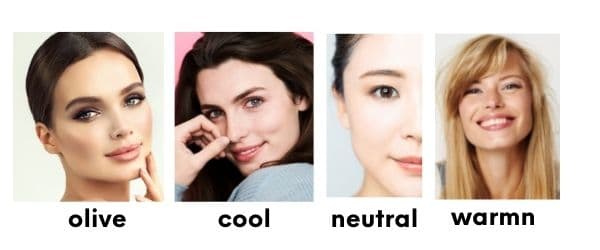
related: the kibbe body system explained
How to Determine Skin Undertone: Seasonal Color Analysis Step 1
In order to determine your exact undertone, you can try one of the following tests. These tests work well for most people, but they can create confusion. If you aren’t getting a clear undertone after a specific test, try another one. And, don’t get too hung up if one test feels like an outlier.
However, the MOST reliable way to find your seasonal color palette is to do color draping. This is examining how your skin reacts to color. I have an ULTIMATE guide on how to DIY your season, here.
The jewelry (metal) test
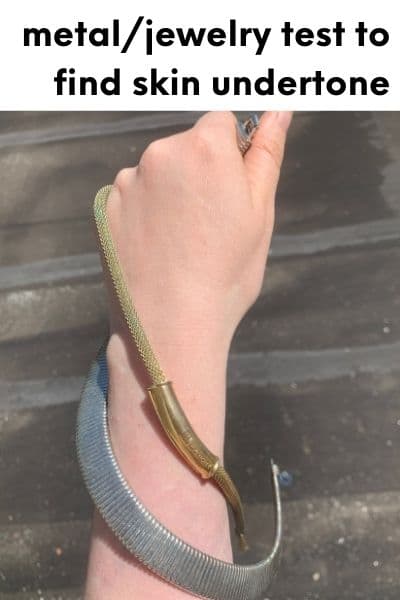
In natural sunlight put both silver and gold jewelry on your skin. Which one looks best? Which one gives you more even-toned, healthy-looking skin? If you look best in gold jewelry then you have warm undertones, and if you look best in silver jewelry you have cool undertones. Be careful about bias with this test. Your natural instinct may be to pick the jewelry color you wear most.
Vein Color Test
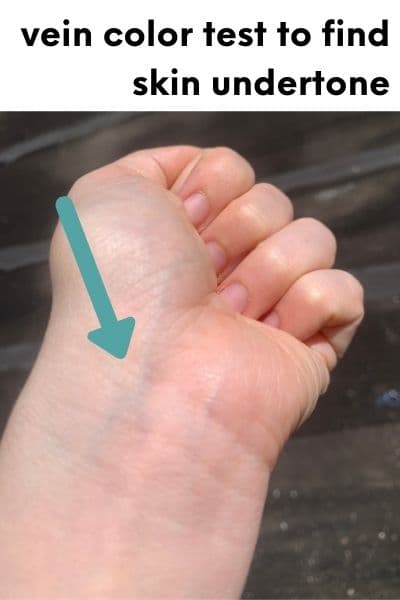
This is an outdated test and has largely been debunked.
The White Paper Test
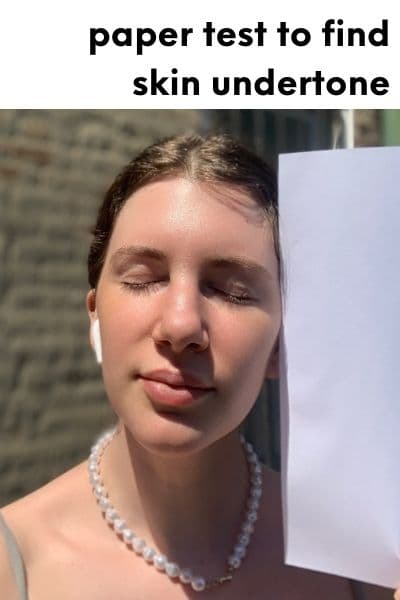
For this test, you can use a piece of white paper or a clear white piece of fabric (avoid ivory or off-white). Hold the fabric or paper near your face, sans any makeup, in natural light. If your skin looks more yellow, peachy, or golden, then you have warm undertones, and if your skin looks more blue, red, or pink, then you have cool undertones.
Tan or Burn test
If you tan really easily you have warm undertones. And if you burn or are unable to tan at all, then you most likely have cool undertones. Although, there are always exceptions to this one.
If none of the tests so far have given you clear answers there are two more options for you. You could be neutral-toned. Every person is technically a mix of both warm and cool tones, however, there is usually one dominant family. For neutral-toned people, there is no dominance and there is an even balance of both warm and cool. This could be the reason your test results show different answers when comparing different options. For instance, you might have green veins, but look best in gold jewelry. OR you might even have both green and blue veins but tan easily.
You can also do a comparison test against other faces with clear undertones. When comparing your face to others within the obvious undertone seasons, it can become obvious what coloring you match best.
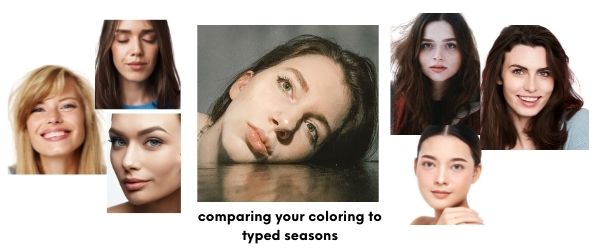
related: how to determine your body shape
Magenta Vs. Orange Test
In natural light, with no makeup drape yourself with bright orange and then magenta fabric. Take photos of each.

Now, even if you haven’t trained your eye yet, this color test/draping will help. Both of these photos were taken with no makeup, natural light, and with the same camera settings. Please note you need to use a cool-toned pink like magenta, if you use a salmon pink you are essentially just comparing two warm colors.
You can see that the orange makes my skin look blotchy and highlights the red patchiness on my nose and cheeks. Whereas pink makes my skin look clear and bright. I am cool-toned. If you look best in orange, then you are most likely warm-toned.
Here are some other color tests to determine your undertone:
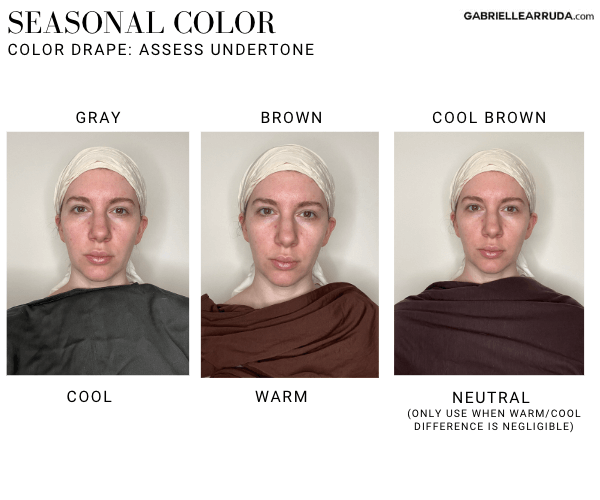

Determining your Season Step 2
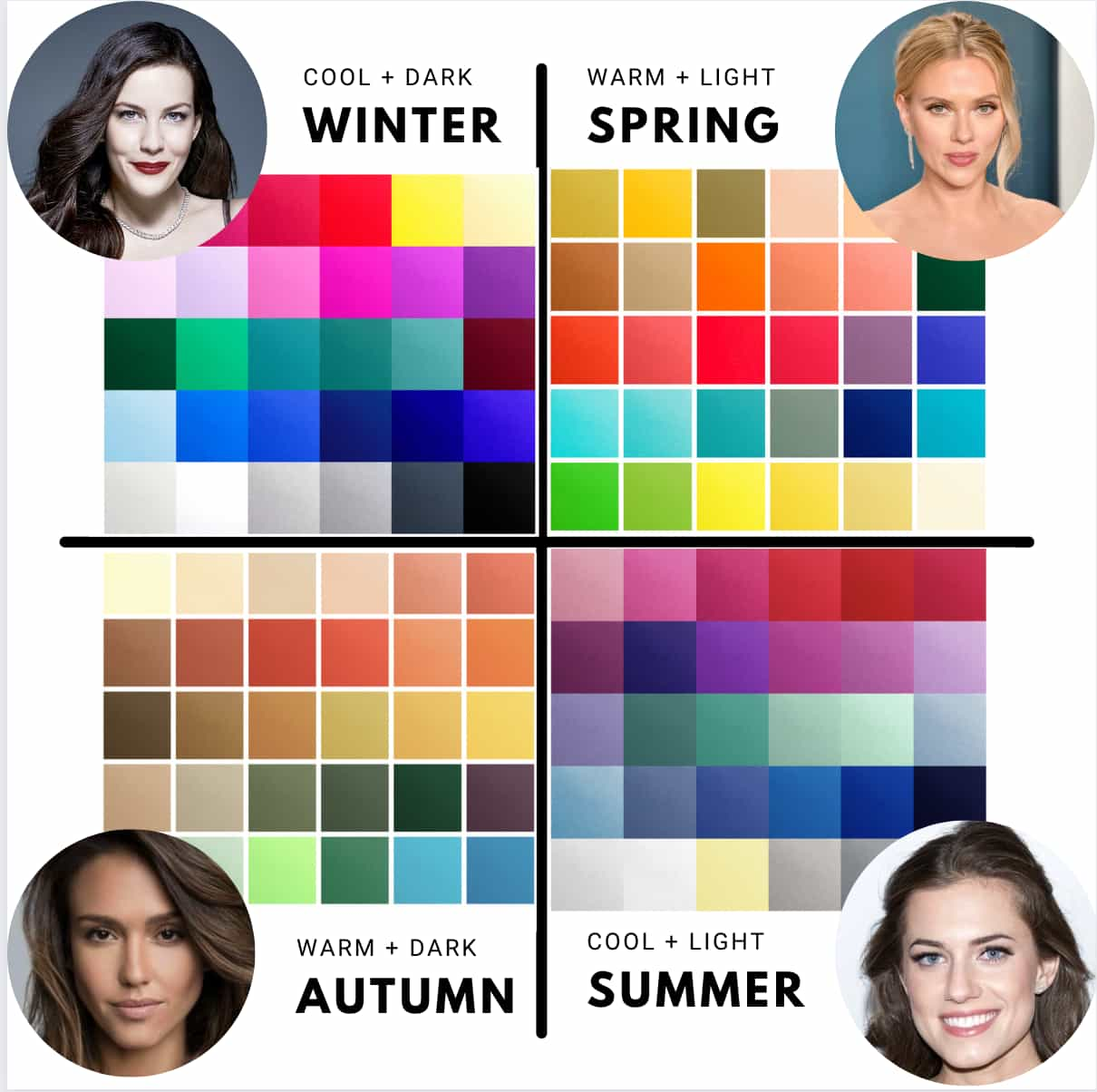
Now that you know your undertone, you can determine your color season by evaluating your hair color and eyes to further categorize it as light or dark.
There are two cool seasons
- WINTER
- SUMMER
There are two warm seasons
- SPRING
- AUTUMN
Here is how they break down in terms of hair and eye color.
Winter Hair and Eyes
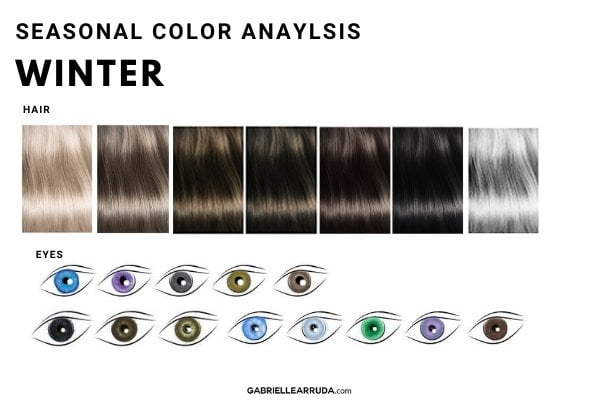
Winter seasons have cool undertones, dark hair, vibrant eyes, and high contrast between their skin, eyes, and hair.
Summer Hair and Eyes
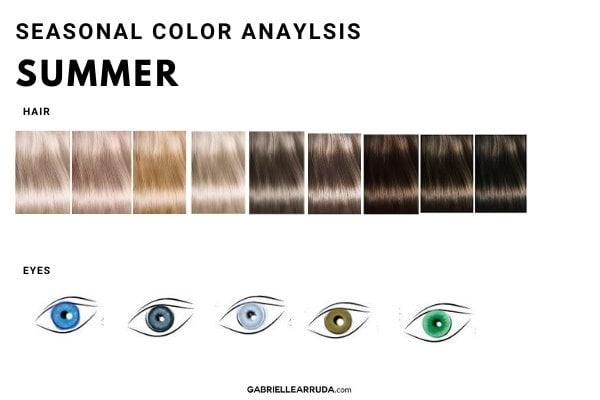
Summer seasons have cool undertones, but have lighter hair and eye colors. While they have some contrast between their skin tone and their hair/eyes it is much more moderate than in the winter seasons.
Autumn Hair and Eyes
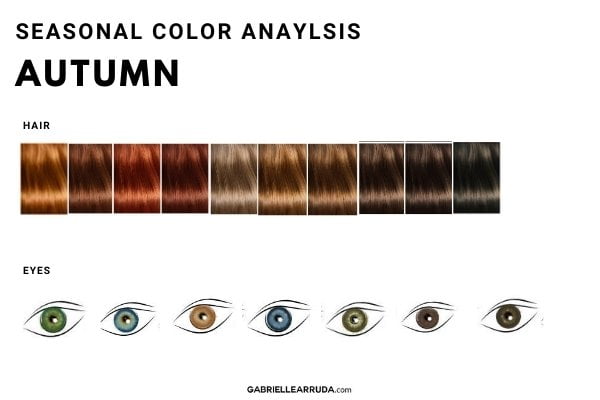
Autumn seasons have warm undertones, with dark hair and dark eyes. They do not have high or even moderate contrast between their skin, eyes, and hair, but rather create a soft blend between all three features.
Spring Hair and Eyes
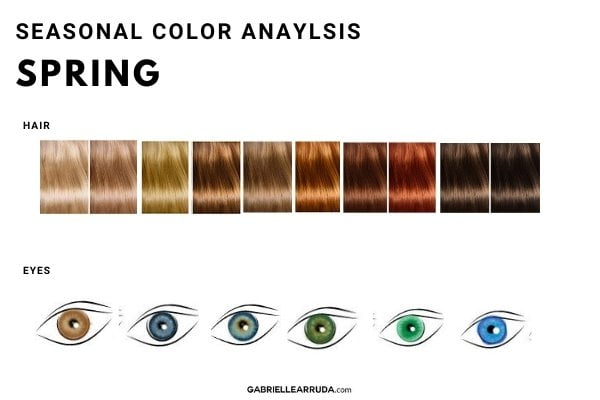
Spring seasons have warm undertones but lighter hair and eyes. They can still have dark features (skin, hair, or eyes), but there isn’t a lot of contrast between the three features and it feels like a blend instead of stark contrast.
Help, I don’t fit into any of these seasons!
There are 4 main seasons, as we have discussed. But that is not where the seasonal analysis ends. In order to expand upon all the options, they went further and broke it down into 12 main seasonal analysis options.
It starts with your undertone/hue (warm or cool), then goes onto value (light or deep), and then into chroma (clear or muted).
Once we take into consideration all three categories, we have 12 main options. This will help you choose the most flattering colors for your unique season, and guide you toward an easy palette to choose from.
It does not mean you “can’t” wear certain colors. But instead, it is about picking colors with your correct undertone to more easily flatter your complexion.
related: seasonal capsule wardrobes
12 Seasonal Color Analysis
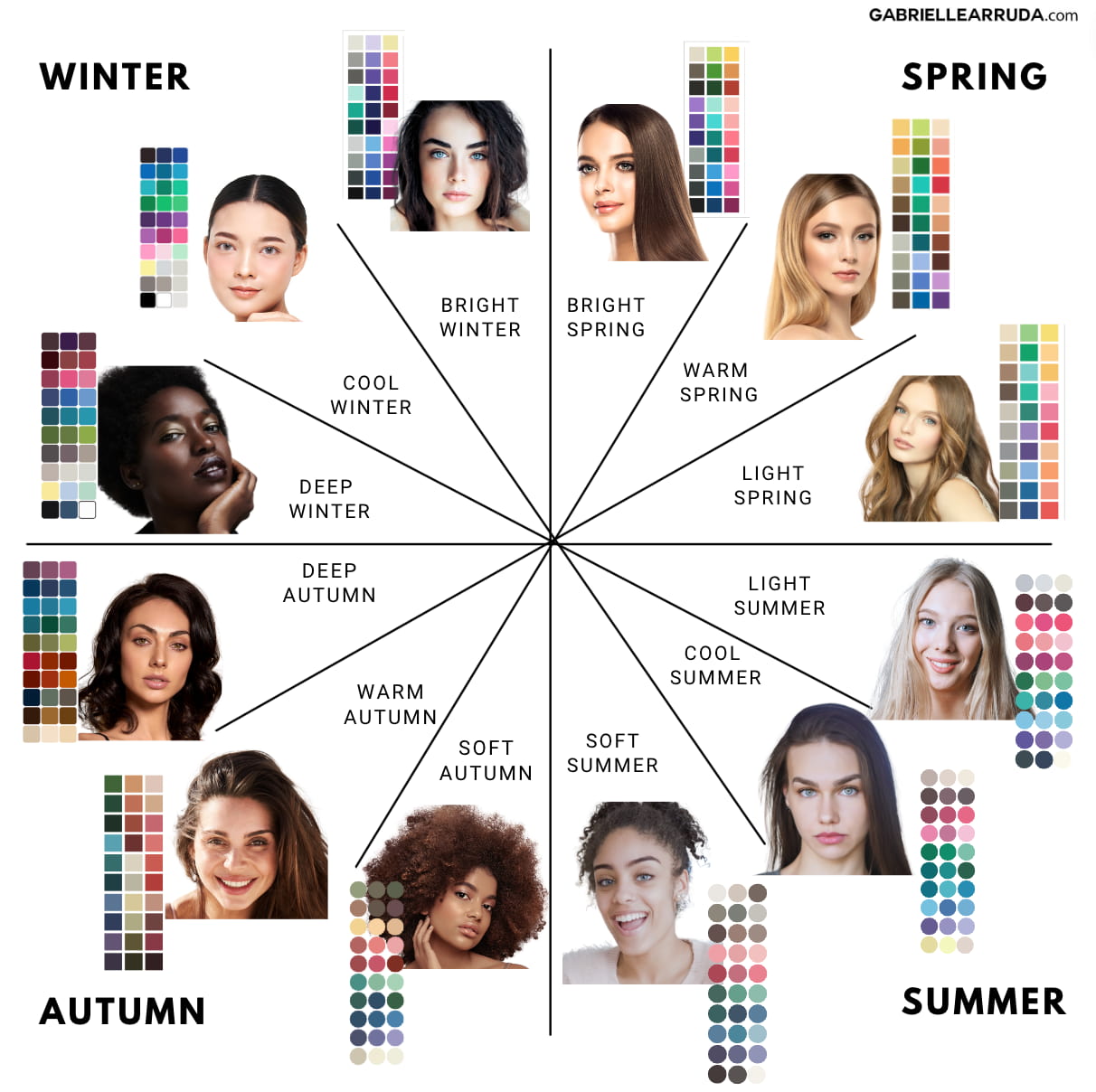
The circle chart will give you a basic idea of what looks and colors we are associating with each of the 12 options.
Now, let’s go over each of the 12 seasonal color palettes and what characteristics they have.
WINTER Season Color Palettes
Cool (True) Winter
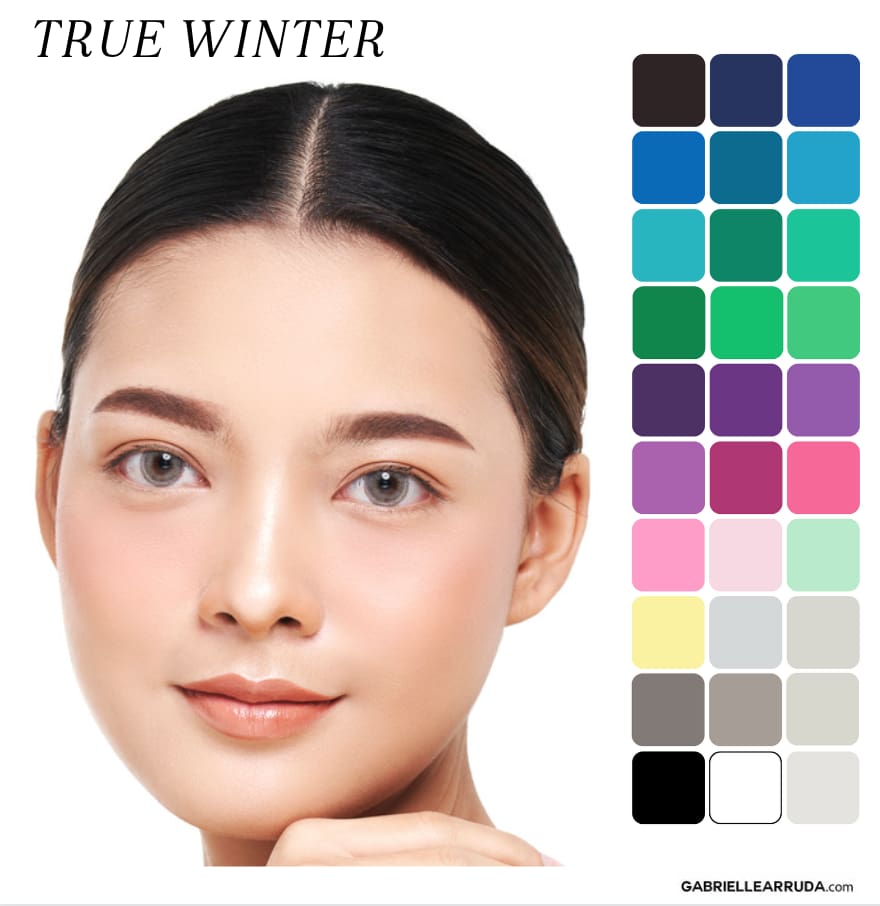
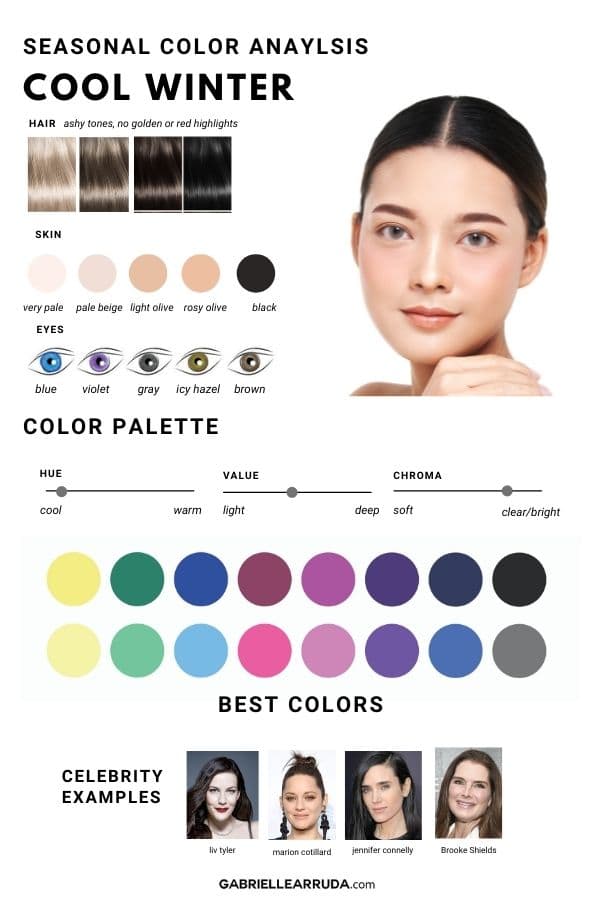
Cool winters have the following characteristics.
Hair: Ashybrown, black brown or black with blue undertones, silver, occassionally there are blondes
Eyes: Blue, gray, violet, light brown, icy hazel, clear brown
Skin: very pale beige, pale beige, pale olive, rosy beige, black (no golden hues)
Best colors: Primary colors, pure pigments, fully saturated
Worst colors: golden and brown hues, warm soft tones
Hue: Cool/Neutral
Value: Medium
Chroma: Clear/ Bright
Cool winters have high contrast between their hair, skin tone, and eyes. They look best in icy colors and cool colors. Avoid warm-toned colors for the most flattering pairings. Pastels all also generally avoided and in their place, you should go for icier colors instead (high saturation + white). Darker values can work well for the cool winters, so long as they have a cool undertone.
Cool Winter Celebrities: Liv Tyler, Marian Cotillard, Jennifer Connelly, Jamie Lee Curtis, Brook Shields
Clear (Bright) Winter `
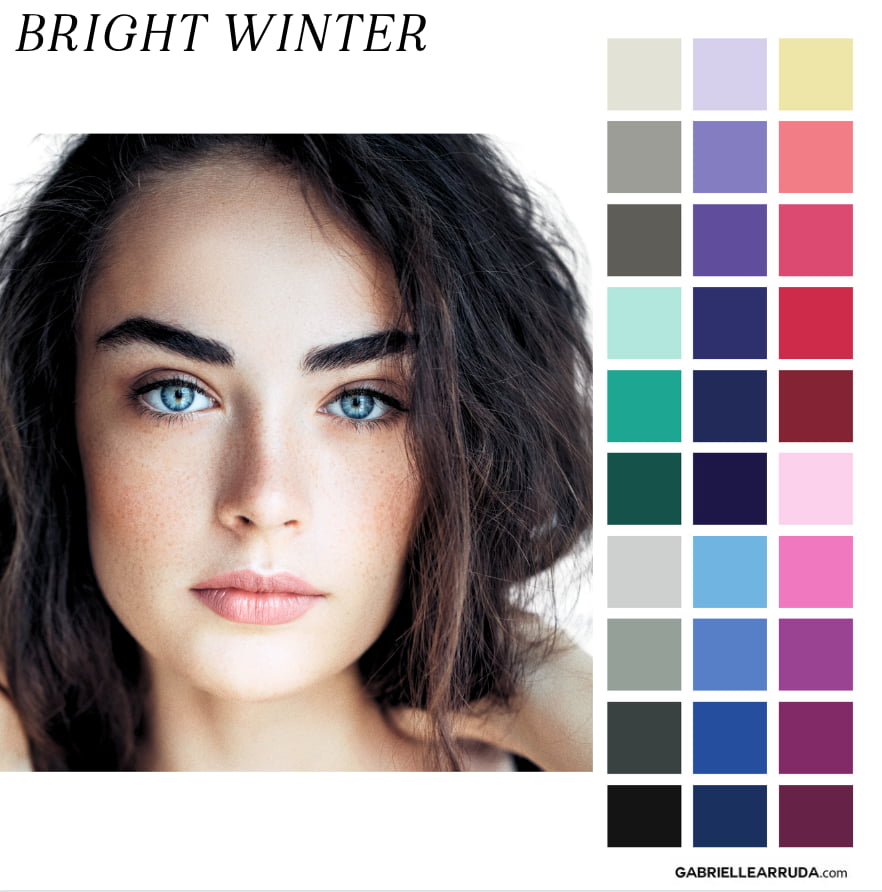
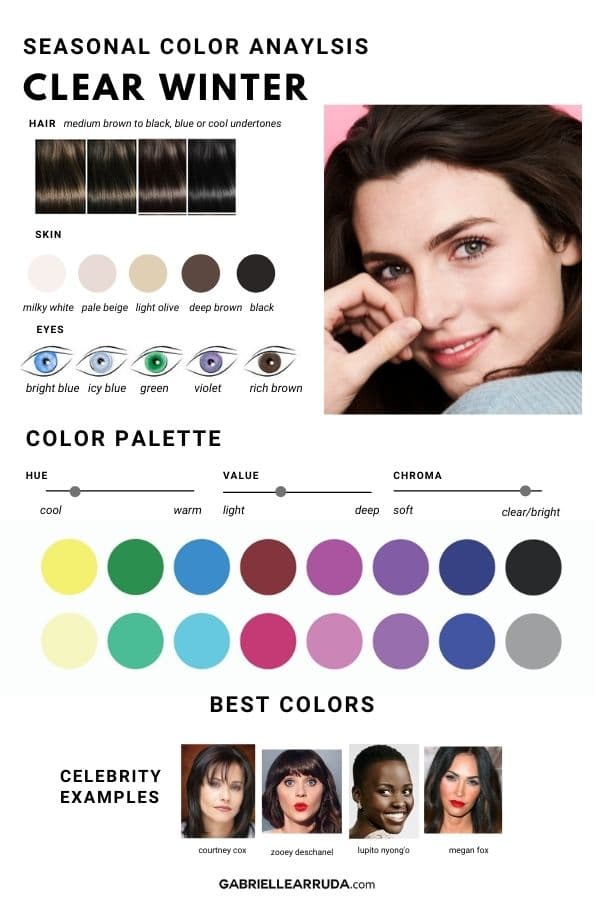
Clear winters have the following characteristics:
Skin: Cool undertones and light olive complexions
Hair: Medium brown to black with blue or ashy tints (no red or golden undertones)
Eyes: Striking eyes (almost jewel-like) are a signature of the clear winter. Bright blue, green, clear gray hazel, and a rich brown
Best Colors: Vivid hues with cool undertones, intense pigments, icy colors
Worst colors: dusty and muted tones, warmer shades
Hue: Cool/Neutral
Value: Medium, learning towards light
Chroma: Clear and bright
Clear winters have high contrast between their skin tone and hair and have striking clear eyes. They are most commonly found with darker hair shades like medium to dark brown but can have lighter hair if it has a cool undertone. They look best in vivid hues that have cool undertones, like icy colors or intense pigment colors. They are a neutral season so they can pull off some highly saturated slightly warm colors as well. They should generally avoid dusty tones, or muted colors.
Clear Winter Celebrities: Courtney Cox, Zooey Deschanel, Alexis Bledel, and Lupito Nyong’o
Deep (Dark) Winter
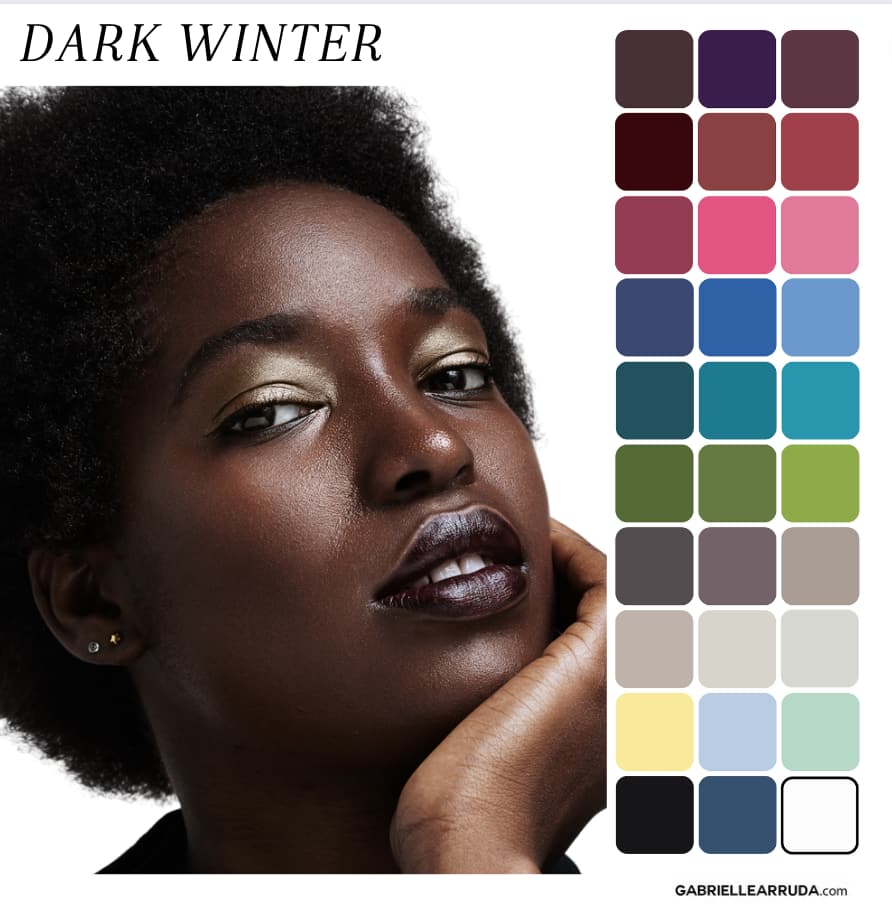
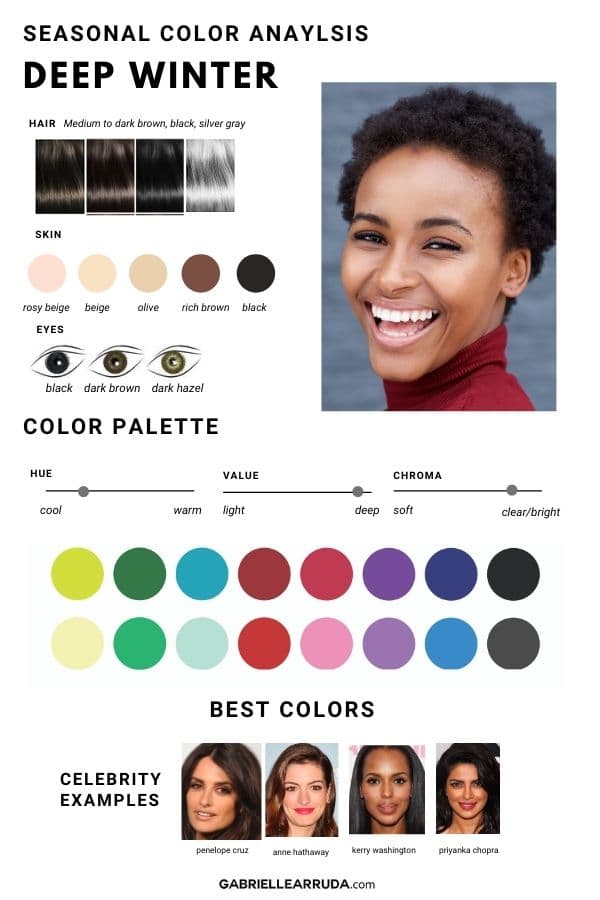
Deep winters have the following characteristics:
Skin: Olive undertones or deep cool undertones
Hair: Medium to dark brown, black, silver gray
Eyes: dark hazel, dark brown, black
Best Colors: High-saturation colors and rich primary colors, pure pigments
Worst Colors: earthy tones, warm nudes, and warm browns, oranges and yellows
Hue: Cool/Neutral
Value: Deep
Chroma: Leans towards bright and clear
Deep winters have a rich and high-contrast feel. Their skin tones are not purely cool and could even be considered more neutral. Olive complexions are also included in this. They have dark eyes and dark hair. They look best in high saturation colors and rich primary colors or pure pigments. They should avoid earthy tones, warm nudes, or warm-toned browns, oranges, and yellows.
Deep Winter Celebrities: Anne Hathaway, Viola Davis, Archie Panjabi, and Priyanka Chopra
SUMMER season color palettes
Light Summer

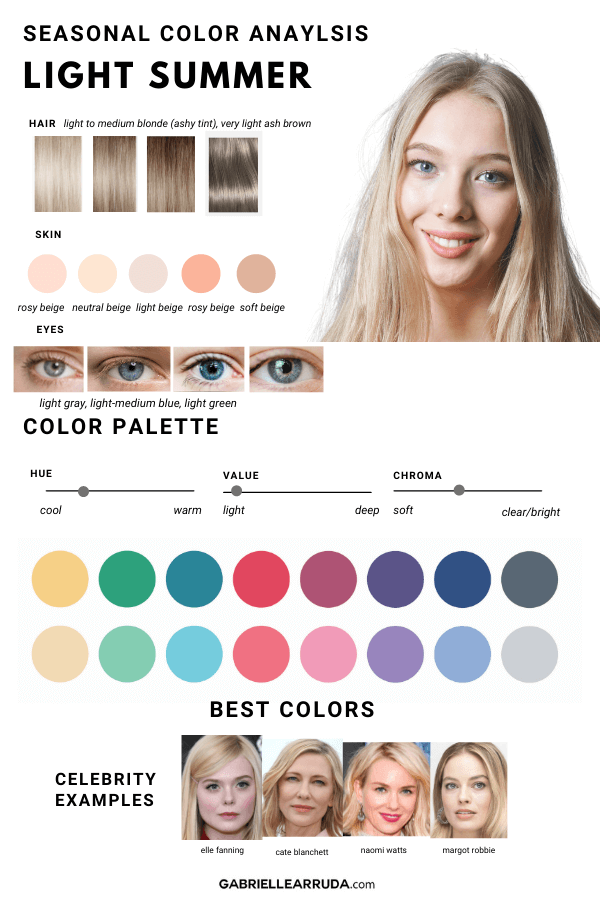
Light summers have the following characteristics:
Skin: Neutral undertone with a possible rosy hint (most likely burns easily)
Hair: Light to medium ash blonde, light ash brown
Eyes: light gray, light blue, medium blue, light green (blue hue)
Best Colors: light colors that are dusty or powdery
Worst Colors: dark overpowering colors, and high-saturation warm-tones
Hue: Cool/Neutral
Value: Light
Chroma: Medium
Light summers have neutral skin that burns easily and can have a rosy tint to it. Their hair is icy and in the blond or very light brown family. They have light-colored eyes like blue, green, or gray. They look best in light colors that are dusty, or powdery. The light colors complement the light tones in their coloring and don’t overpower their delicate features. They should generally avoid dark colors or high-saturation warm tones.
Light summer celebrities: Elle Fanning, Margot Robbie, Cate Blanchett, Amy Poehler, and Naomi Watts
Soft Summer
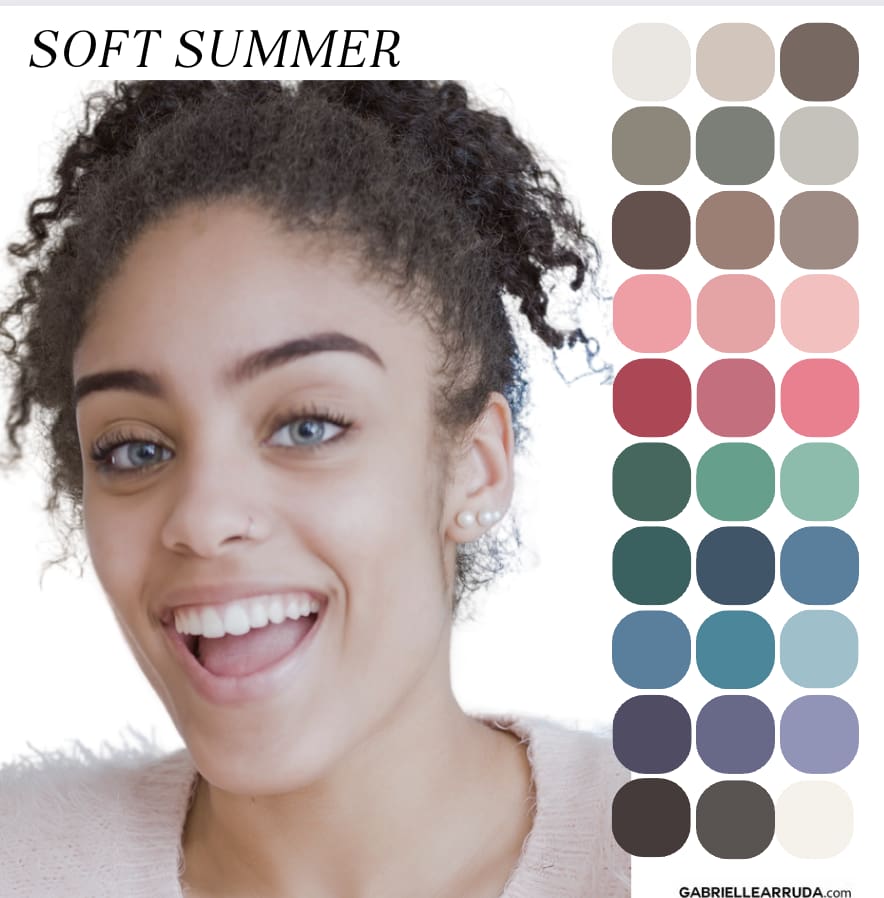

Soft summers have the following characteristics:
Skin: Light to medium beige, light brown withe neutral undertones
Hair: Light to medium brown (ash blond tint)
Eyes: Gray, Blue, Hazel, Brown
Best Colors: Soft, muted hues, in the cooler color family
Worst Colors: Neons, rich clear colors
Hue: Cool/Neutral
Value: Medium
Chroma: Soft
Soft summers have neutral undertones or blue undertones with a pink tint. They can also have brown skin tones that have a neutral undertone. Their hair colors are in the light-to-medium brown color family with ash blond highlights or tints. Soft summers have low contrast between their eyes, hair, and skin. They look best in soft and muted hues that are more subtle (usually in the cooler color family). They should generally avoid clear colors that are neon or especially rich, which tends to overwhelm their complexions subtlety.
Soft Summer celebrities: Sarah Jessica Parker, Cara Delevingne, Ellen Pompei, Jennifer Aniston, and Rihanna
Cool Summer


Cool summers have the following characteristics:
Skin: Cool undertones that generally range from medium beige to dark cool brown
Hair: Medium to dark brown with ashy undertones
Eyes: gray, blue, slate
Best Colors: Cool hues that are medium to dark in tone
Worst Colors: warm tones, earthy shades, especially warm yellows
Hue: Cool
Value: Medium
Chroma: slightly leans towards soft/muted
Cool summers have cool or blue undertones to all three characteristics (skin, hair, and eyes). They often have cool or neutral skin tones with grey, blue or slate eyes. Their hair tones are ashy in nature and range from medium to dark brown (not black). They look best in cool hues that are medium and sometimes dark in the color palette. They should avoid warm tones, especially yellow-toned hues or earthy warm shades.
Cool Summer Celebrities: Kate Middleton, Allison Williams, Emily Blunt, and Emily Deschanel
SPRING season color palette
Light Spring
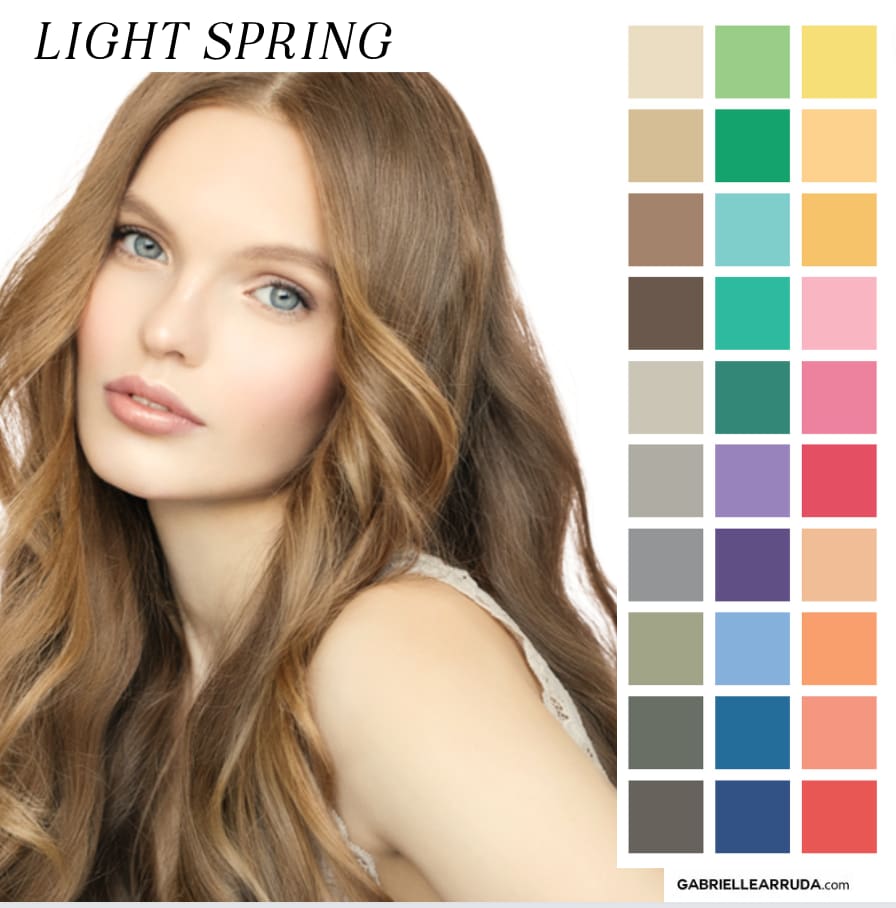

Light springs have the following characteristics:
Skin: fair skin with pink or peachy undertones, may tan, freckles are common
Hair: Light to medium gold blonde and brown, sometimes strawberry blonde
Eyes: Blue, green, hazel, or light soft brown
Best Colors: Light, warm, clear colors
Worst Colors: Dark, overpowering colors
Hue: Warm/Neutral
Value: Light
Chroma: Medium
Light springs have peachy or rosy fair skin that may tan or freckle. They have golden blonde or brown hair with blue, green, hazel, or even light brown eyes. They look best in light, warm, clear colors. They should avoid wearing dark or overpowering colors that can wash them out.
Light Spring Celebrities: Taylor Swift, Scarlett Johansson, Blake Lively, and Michelle Williams
Clear (Bright) Spring
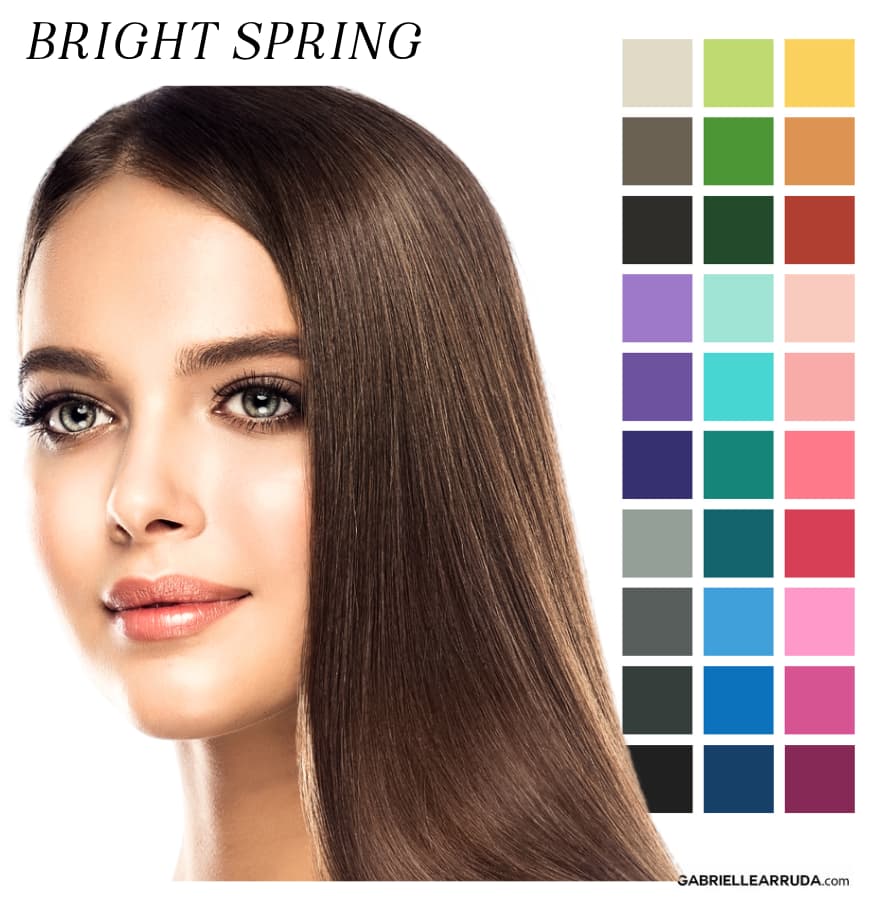
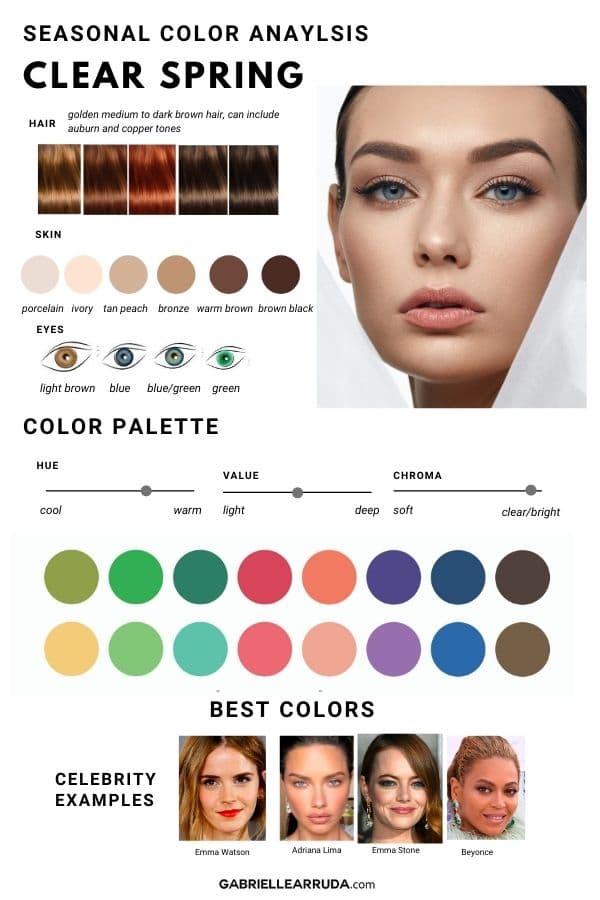
Clear springs have the following characteristics
Skin: Porcelain, milky white to golden brown, tans easily
Hair: Golden light to dark brown hair, can include copper or auburn tones
Eyes: Bright, clear eye colors. Blue, green, and light brown
Best Colors: Saturated, warm hues and bright colors
Worst Colors: Nudes, dusty-muted pastels
Hue: Warm/Neutral
Value: Medium
Chroma: Clear, bright
Clear Springs have porcelain, bronze, and warm brown skin that usually tans easily (can include a brown/black as well). Their hair colors ran from medium to dark brown (with golden undertones) and can include some red or copper highlights. They have bright clear eyes like blue, green, and topaz. They look best in saturated, warm hues. Generally, they should avoid nudes and muted/dusty pastels as it will wash them out. Clear Springs are high-contrast compared to the rest of the spring family, which lets them embrace bright colors easily.
Clear Spring Celebrities: Emma Watson, Mila Jovovich, Jessica Pare
Warm (True) Spring
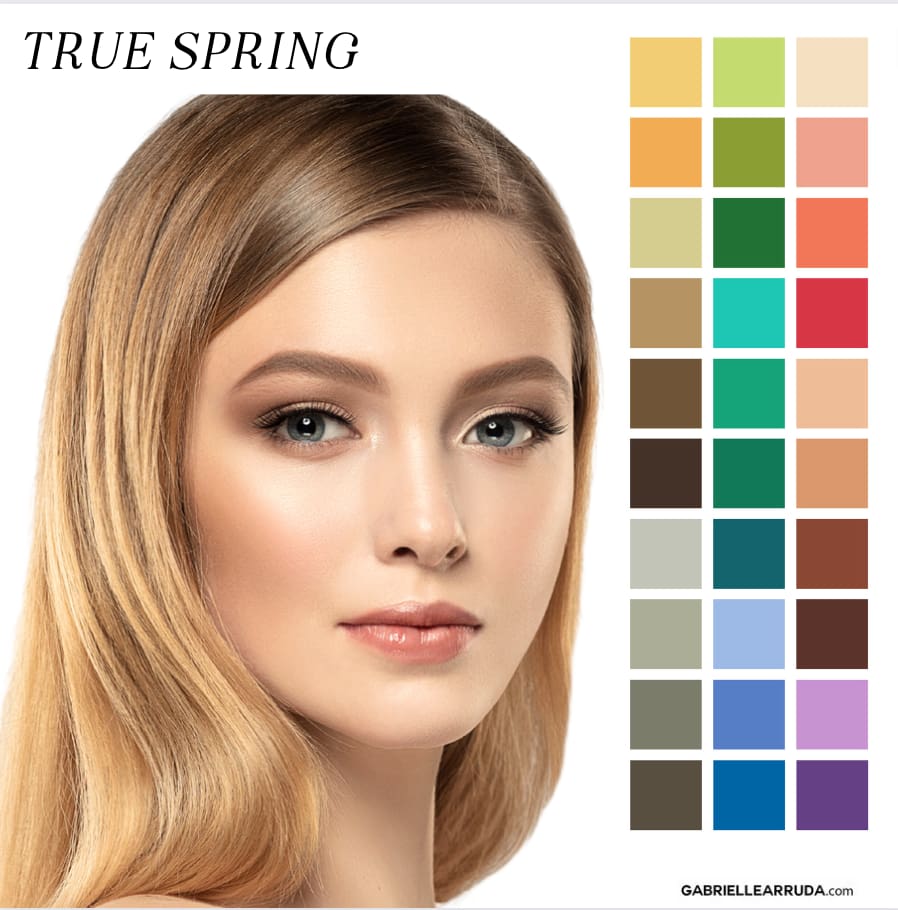

Warm springs have the following characteristics:
Skin: Warm toned skin, porcelain shades to light bronze
Hair: Strawberry blonde, golden blonde, light golden brown, coppery red
Eyes: blue, light brown, dark green, and light hazel
Best Colors: Vibrant, warm-toned colors
Worst Colors: cool-toned pastels and darker shades
Hue: Warm
Value: Medium
Chroma: Leans towards Clear and Bright
Warm springs have warm traits in their eyes, skin, and hair. They have warm porcelain, to light bronze skin with golden blonde hair, strawberry blonde hair, or coppery red hair. They have light eyes. They look best in vibrant, warm-toned colors that compliment the glowiness in their complexions. They should avoid cool-toned pastels and darker shades. They look fantastic in oranges and yellows that bring out their warm intensity.
Warm Spring Celebrities: Blake Lively, Cameron Diaz, Goldie Hawn, Jayma Mays, and Gillian Anderson
AUTUMN season color palette
Warm (True) Autumn
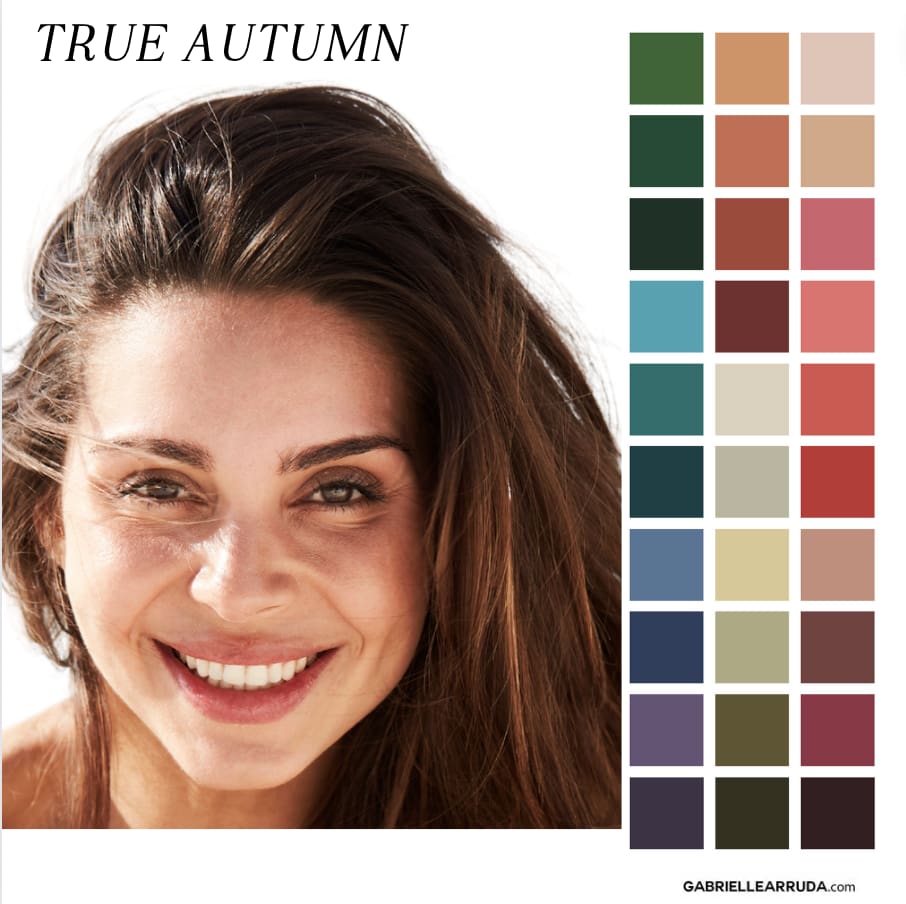
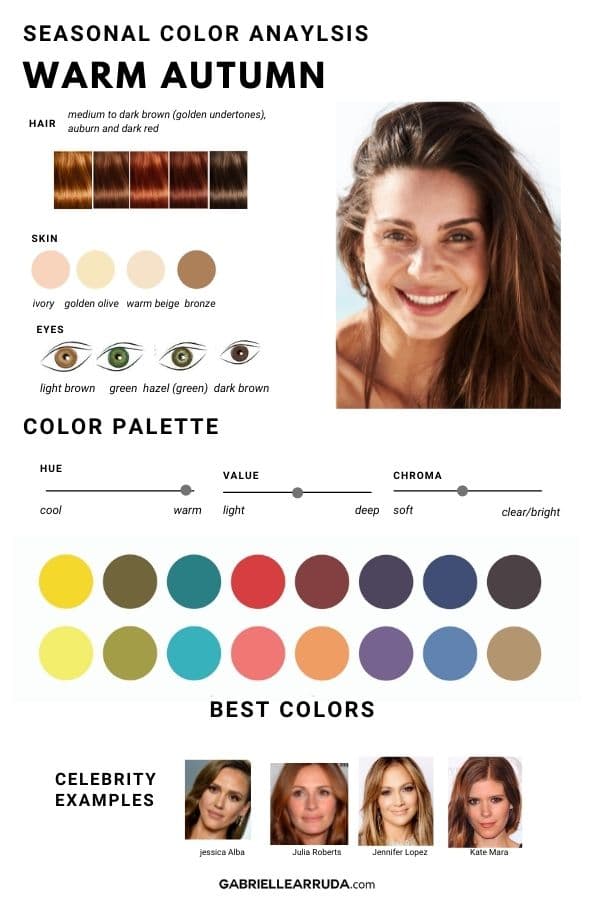
Warm autumns have the following characteristics:
Skin: Ivory, golden, medium brown (all warm undertones)
Hair: Medium to Dark Brown with golden tones, Warm auburn, darker red
Eyes: light brown, green, hazel, sometimes dark brown (rich)
Best Colors: Rich and muted warm tones (think browns, rusts)
Worst Colors: pastels and pastel brights
Hue: Warm
Value: Medium
Chroma: Medium
Warm Autumns have warm undertones to their skin and the tone can range from ivory to medium brown. They typically have hair colors that range from medium to dark brown or red (including auburn) all with golden undertones. Their eyes are light brown, green, or (green) hazel. They look amazing in rich and muted warm tones, especially earthy colors like brown and rust. They should generally avoid pastels or pastel brights that wash them out.
Warm Autumn Celebrities: Jessica Alba, Jennifer Lopez, Kate Mara, Julianne Moore, and Julia Roberts
Deep Autumn
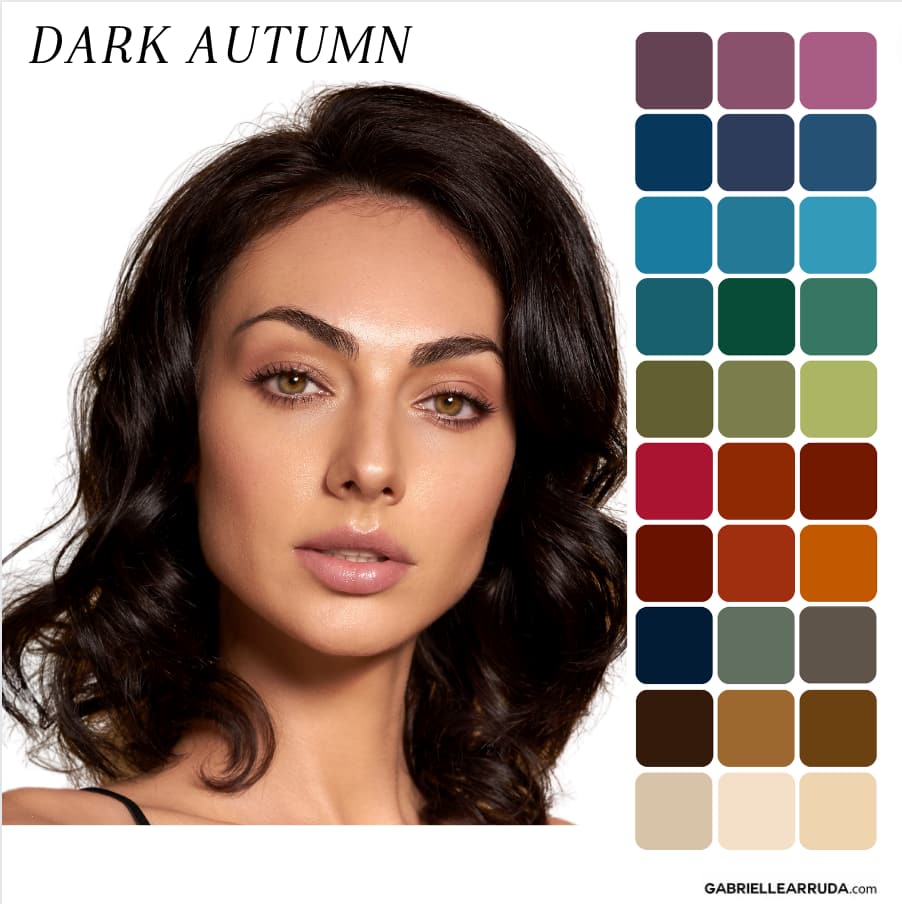

Deep autumns have the following characteristics:
Skin: Ivory, golden beige, medium to rich browns with warm undertones
Hair: medium to dark brown, brown-black (can have honey or ginger highlights)
Eyes: Dark-blue, dark green, hazel, dark brown, brown black
Best Colors: Bold, warm colors with rich pigments
Worst Colors: Dusty colors and pastels
Hue: Warm/Neutral
Value: Deep
Chroma: Muted
Deep autumns have warm tones in their hair, eyes, and skin. They have medium to dark brown hair with golden undertones. Their eyes are darker, and range from dark blue, dark green, to dark brown or brown/black. Their skin tans easily and ranges from warm ivory to rich chocolate. They look amazing in bold, warm colors that are rich in pigment. They should generally avoid dusty colors or soft pastels as it will make them look washed out.
Deep Autumn Celebrities: Kendall Jenner, Halle Berry, Natalie Portman, Sofia Vergara, Oprah, and Mindy Kaling
Soft Autumn


Soft Autumns have the following characteristics:
Skin: Ivory, tan, to light brown (all with warm or neutral undertones)
Hair: Golden blonde to dark brown (can have ginger highlights)
Eyes: Green, Hazel, Blue or light brown
Best Colors: Muted warm-toned colors, blended colors
Worst Colors: Stark colors (like black), and high-pigment bright colors
Hue: Warm/Neutral
Value: Leans Light
Chroma: Soft/Muted
A soft autumn does not have a lot of contrast between their hair and skin. Their skin tone often has neutral undertones, but can also have more prominent warm undertones. They look best in muted colors with warm undertones, that pair nicely with their skin tones hue. They also look great in blended colors (not primary). They should generally avoid stark colors (black), or bright colors (high pigment, like fuchsia, etc) because they tend to make them look sallow.
Soft Autumn Celebrities: Gigi Hadid, Gisele Bundchen, Drew Barrymore, and Rosie Huntington-Whiteley
What are the benefits of knowing your season?
Knowing your seasonal color will dramatically help your style, makeup, and overall look. It will guide your choices on how to use color to flatter your skin tone, what makeup shades to look for, and even what hair dyes will flatter you most.
Knowing your seasonal colors can also help you hone your wardrobe so that you stop buying items that don’t enhance your beauty. The colors that relate to your season will make you look bright, fresh, and alive instead of washed-out or sallow.
The pitfalls of seasonal color analysis
It can be difficult to pinpoint your seasonal color at times. So if you struggle with the methods listed above, or can’t quite seem to place yourself, ask a friend for help. An outside perspective can help you narrow your season down without your innate bias.
The cool pink/orange draping test should help you narrow down your season options. If you look best in orange you are warm-toned and will be in the autumn or spring season. If you look best in magenta you will fall into the summer or winter season.

Next, you can also take a well-lit photo of yourself and turn it into a black and white photo by “de-saturating” it (do not use a filter!). This will help you see how much contrast you have in your face. Knowing your contrast will be able to hone which sub-season you belong to.
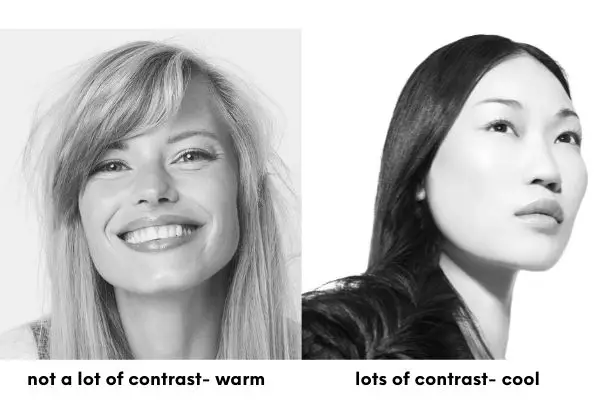

Whew! Have I inundated you with enough color theory and seasonal color analysis yet? These charts are great to save for reference. They can help you hone your wardrobe and makeup to perfectly fit your complexion.
And if you struggle with your wardrobe, and it’s constantly a hot mess that doesn’t work together (even a little), check out my Self-Guided Personal Style Workbook to sort through your style data and build an authentic personal style you love.
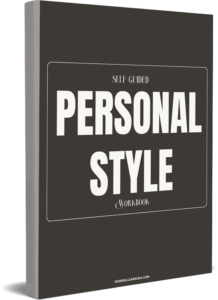
Now, go be that _insert color season here_ and flourish!
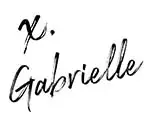
This is a lot of information to digest, so be sure to save the pin below so you can reference your best colors and your season, as needed.
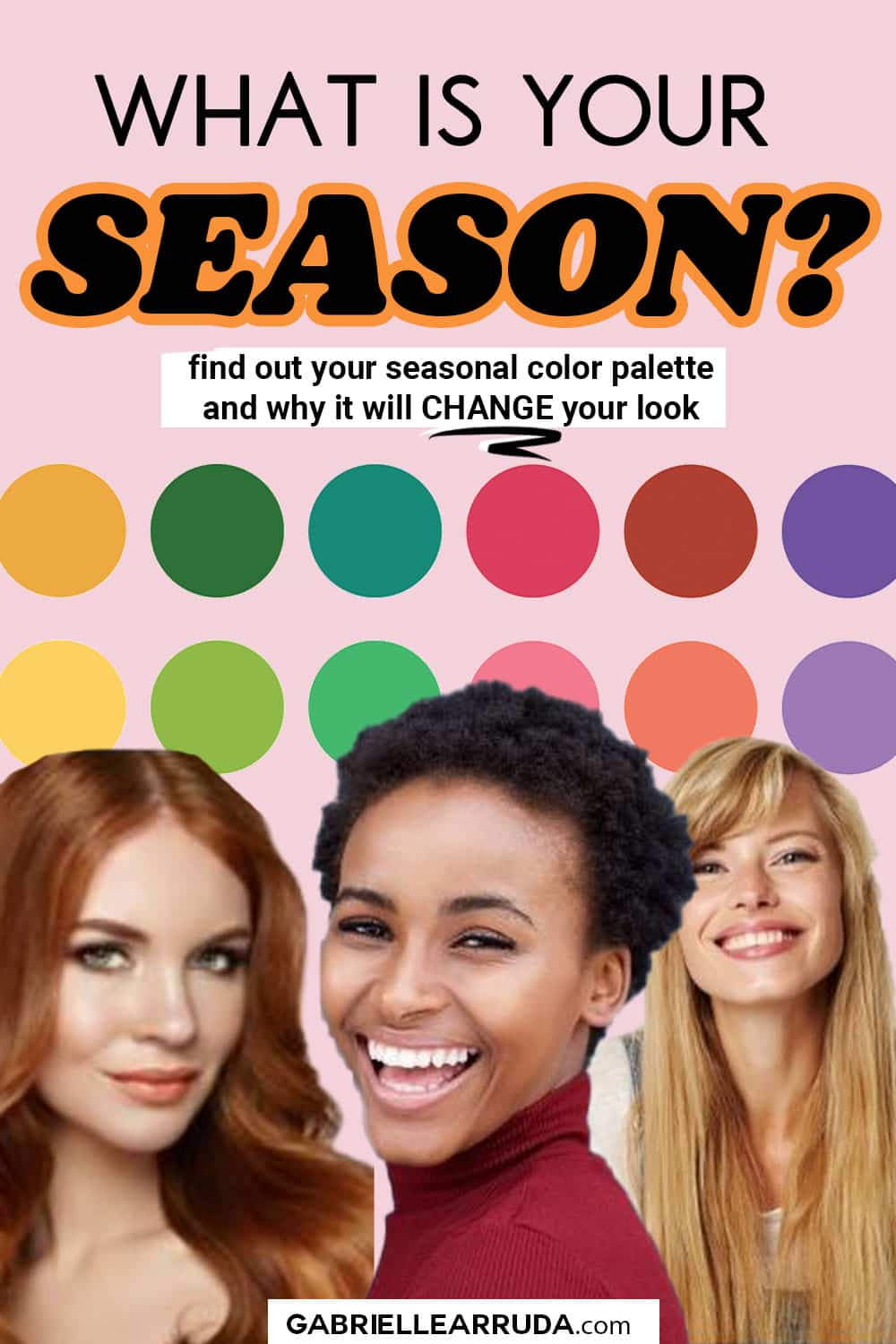

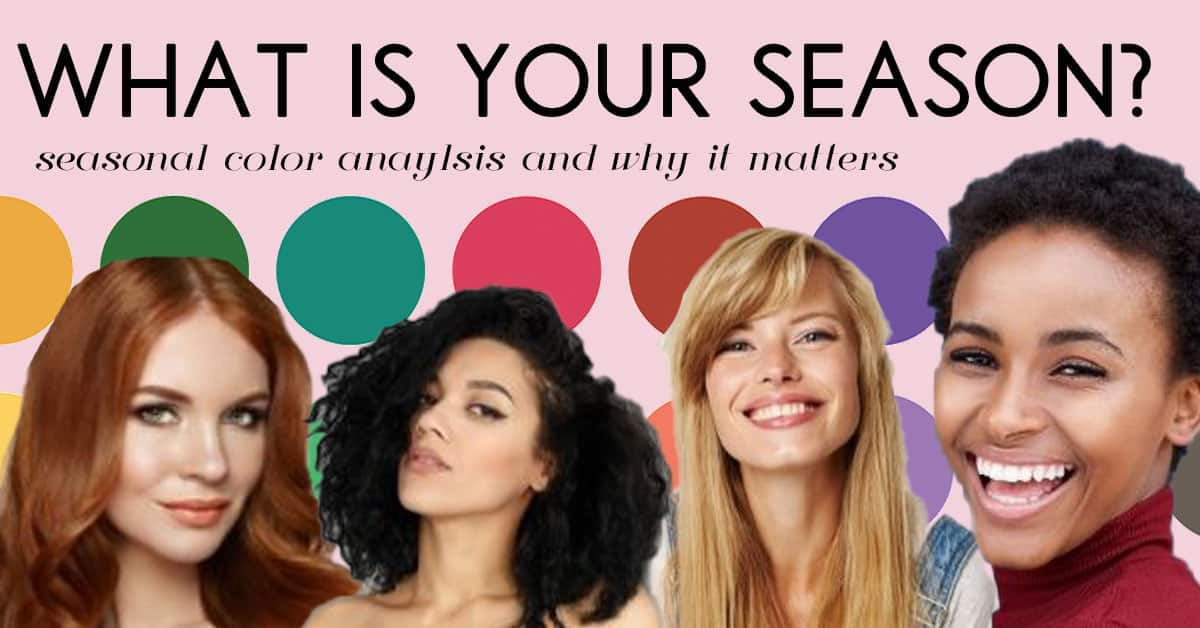
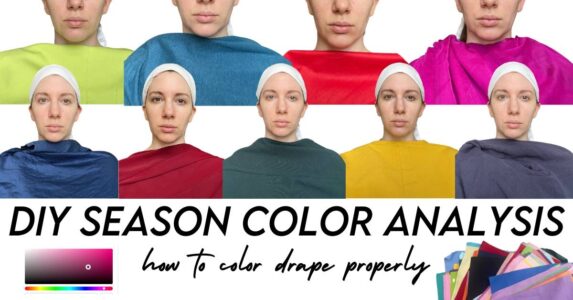
Shannon
Sunday 11th of February 2024
This is amazing however I've been through repeated analysis and I still anticipate can't find my season or tone!! I was professionally typed online as Soft Autumn, my husband said I disappeared I'm Soft Autumn. He has always said he loves bright colours on me. I wore a royal blue/cobolt top and got compliments from everyone I knew about how my skin was glowing. I wore a rich purple top and I got the same compliments as I did with a light lavender top. When I do all of the quizzes, try to find my undertones, and I fall under neutral with everything. My Chroma is on right side of the middle almost bright. My value isn't light nor dark it's in the middle on the right side of dark. My hue isn't warm and it isn't cool either it's also in the middle. I look good in both shiny rosegold/light yellow gold and shiny silver I just like silver with grey (I wear all shades of grey well), white, black, navy and cobalt blue. I like to wear light shiny rosegold/light yellow gold with all other colours. I hate most of the colours of warm Autumn like, red-orange, mustard, rust, orangy yellow and yellow green and yellow browns are awful so I don't wear those. Muted colours do nothing for me but they don't look horrible, I can do them but they're not the best. But yet lemon yellow and butter yellow and true yellow look good on me!! I can also wear olive green, khaki and beige and many shades of pink. I have been so lost where I stand!! I have dark clear brown eyes with a spring flower burst around my pupil (not aztec sun) yet I have winter spokes and blue/grey ring around my iris and fair skin. I neither burn nor tan quicker than the other- I tan within an hour and burn longer than that but it turns to a tan by the next day. My hair is medium reddish brown yet I was born blonde. 😵💫😵💫😵💫
Giselle LJ
Sunday 4th of February 2024
Thank you this was amazing and so helpful
michaela garcia
Saturday 27th of January 2024
Thank you for all the free education! Im curious if you have found color analysis drapes that you recommend? The colors you provide for each season make sense to me in terms of their relation to the color wheel including tints and tones. I feel like the drape sets ive seen don't always include the most wearable colors within a color season. Thank you in advance!!!!
Gabrielle Arruda
Thursday 1st of February 2024
I'm in the process of being certified in both Image Institute and Sci-Art so I'll let you know which drapes I prefer. That being said, drape sets are used more for determining your season, so they might be the most "wearable" but more likely the most informative. If youre talking about a color fan, I don't have a particular one I prefer. I tend to make up my own palette and try to judge a color based on its color properties over a fan reference.
Lili
Sunday 21st of January 2024
I read a lot about colour analysis, and yet this is the best article/blog I found on the topic. It was a huge help for me to find my colours and what suits me the most. The pictures were helpfull too, because it was easier to understand the descriptions when I saw what you meant. Thank you!!
Gabrielle Arruda
Monday 22nd of January 2024
I'm so glad it helped!
Moonflower
Saturday 13th of January 2024
Hiya! I've been looking through your style advices for a while and they have been helpful! I thought I'd share a part of my own process too since my skin is gold looking and I blush a very cool pink. Been glad to hear about overtone and that eyes will look better in the right season for your skin, it's so true! The obvious answer for me was autumn, y'kno, I look golden, my eyes pop orange in natural lighting, my veins look more green, I even have the aztec sun patern. I look like a yellow alien in warm colors, lol. It's so bad I ended up cringing when seeing warm colors. Getting over it, on the right person they're great. I had to face it, I look all warm but I have cool undertones. Taking pictures and comparing colors in front of mirrors has been instructive, I'd suggest everyone to do both to see if some difference occures between the two, as it happened for me. Both mirror and photos confirmed that I look much better in cool hues, that tinits are too light, altho pictures showed better skin coloration with brighter winter colors, yet in mirrors, the more muted summer colors looked better. I decided that mirror wins because photos can be off. I stood at the same spot for both for the reccord, and based my conclusion on 10 minutes sessions on several days, same fabric being examined a few times. I found looking at the same fabric in different lighting can help identify colors in store, once you know which one looks good on you I mean, since stores often have artificial lighting that can change from one part of the store to the other. Got caught thinking a cool winter and a dark winter pieces were true summers because of it, lol. Got the cool part down at least. I think the worst part of finding your color is when you know but cannot find the right things, I mean "this looks great but it's not the right color" or "this is the right color but I don't like it" kind of thing. I'm looking for certain pieces that fit true summer and my essence(s) and I've been disappointed so far. Need some new clothes atm, old ones getting worn out. Talking of essences, I found something strange that I think is explainable by essences. Gold accesories look better on me than silver ones even tho I'm predominently cool in temperature. Here I'm talking about delicate, small things like a small chain with a pearl on it. So I've been thinking about why. I think that romantic might look better in gold because it looks more luxurious than silver, naturals get gold because it's closer to earthy than silver, and ethereal, I don't know but they are associated with gold and white a lot. I don't know if some essence would be more silver than gold even if they are warm, maybe dramatic for contrast and gamine for this surprise effect, tho I think those two essence can get away with the "wrong colors" more than the others. Talking about "wrong colors" I have feeling that certain people might be affraid of wearing things that might not make their eyes shine, there's so many "use this color to make X eye color pop" around, so I want to stress that the right color palette can technically clash with you eyes yet make them more beautiful. I wrote earlier my eyes look orange, yet in the wrong color palette, it looks weird, like alien eyes(I have ethereal in my essence blend to end up looking like an alien so much lol). In the right colors, my eyes keep their orange hue, but the outer ring take some green quality, and I finally look like a human! This new hue in my eyes actually look awesome and somewhat more honest and trustworthy, not sure why but it gives me this impression. Guess I don't look hidden behind colors anymore. That's it for me, thank you for reading! Much love!